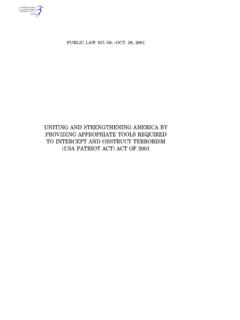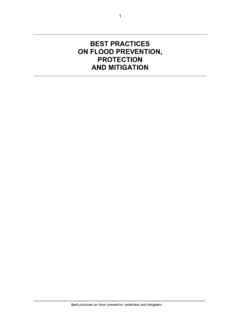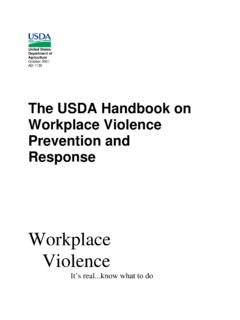Transcription of Knowledge and Practice of Nursing Staff towards Infection ...
1 Journal of Education and Practice ISSN 2222-1735 (Paper) ISSN 2222-288X (Online) , , 2015 79 Knowledge and Practice of Nursing Staff towards Infection Control Measures in the Palestinian Hospitals Dr. Imad Fashafsheh Mr. Ahmad Ayed* Mrs. Faeda Eqtait Mrs. Lubna Harazneh Nursing Department, Arab American University, Palestine *E- mail of the correspondence author: Abstract: Health care professionals are constantly exposed to microorganisms. Many of which can cause serious or even lethal infections. Nurses in particular are often exposed to various infections during the course of carrying out their Nursing activities. Therefore nurses should have sound Knowledge and strict adherence to Infection control Practice .
2 Aim of the study: The study aimed to assess the level of Knowledge and Practice of Infection control among nurses in governmental hospitals of Palestine Methods: A cross sectional study was conducted between November, 2014 and January, 2015 in governmental hospitals found in North West bank districts. Data were collected using pre tested questionnaire on 271 nurses selected by purposive sample. Collected data were checked, coded and transferred to SPSS version 20 for analysis. Frequency, Mean and other statistics were calculated. P-value less than were set as statistically significant. Results: the current study revealed that, approximately half ( ) of the studied sample had fair Knowledge level (>80%). However, the majority ( ) of the studied sample had Good Practice (>80%).
3 No significant statistical differences were found between mean Knowledge scores towards age, years of experience, and training course (f= , , ) respectively at p < ( , , ) respectively. Significant statistical differences were found between mean Knowledge scores towards gender and qualification (F = , ) respectively at p < ( , ) respectively. No significant statistical differences were found between mean Practice scores towards age, years of experience, training course, and qualification(f= , , , ) respectively at p < ( , , , ) respectively. Significant statistical differences were found in mean Practice scores only in relation to gender, (F = ) at p < ( ). Conclusion: Based on findings of the current study, it can be concluded that inspite of having good Practice level regarding Infection control, nurses had fair Knowledge level.
4 Recommendations: Updating Knowledge and Practice of nurses through continuing in-service educational programs; emphasizing the importance of following latest evidence-based practices of Infection control in continuing education / training program; providing training programs for newly nurses about Infection control and at regular intervals; and a replication of this study using observation checklist should be done to assess the level of Practice . Keywords: Infection control, Knowledge , Practice , Nurse 1. Background: Health care professionals are constantly exposed to microorganisms. Many of which can cause serious or even lethal infections (Twitchell, 2003). Nurses in particular are often exposed to various infections during the course of carrying out their Nursing activities ( Kosgeroglu, Ayranci, Vardareli, & Dincer, 2004).
5 Nosocomial Infection (NI), or hospital-acquired Infection or Health-care-associated Infection (HCAI) refers to Infection that is acquired during the process of care and not manifested at the time of admission to a hospital or other health-care facility (Nejad, Allegranzi, Syed, Ellis, &Pittet, 2011). It has been estimated that the risk of health care-associated Infection is 2 to 20 times higher in developing countries compared to developed countries and 5% and 10% of patients admitted to hospitals in developed countries acquire these infections (WHO, 2008). Many Infection control measures, such as appropriate hand hygiene and the correct application of basic precautions during invasive procedures are simple and of low-cost, but require Staff accountability and behavioral change, in addition to improving Staff education, reporting and surveillance systems (Bouall gue, Naija, Said, Nouria, Jaidane, Dhidah, & Boujaafar, 2013).
6 To utilize these precautions, the human element plays an important role in increasing or decreasing the chances of catching HCAI (Cole, 2007). Therefore, adequate Nursing Staff is necessary because a higher patient-to nurse ratio increases the risk of nosocomial Infection (Hugonnet, Chevrolet, & Pittet, 2007). Transmission of infectious agents within a health care setting requires three agents; a reservoir, susceptible host, and a mode of transmission. Patients health care workers and visitors are susceptible host in the hospital environment. The complex interrelationship between a potential host and an infectious agent produces Infection . The mode of transmission may vary by type of organism as some types of organism may be transmitted more than one route. The complex interrelationship between a potential host and an infectious agent produces Infection (Siegel, Rhinehart, Jackson, & Chiarello, 2007).
7 Compliance on the part of healthcare workers with standard precautions has been recognized as an efficient and effective means to prevent and control health care-associated infections in patients and health workers (Garner,1996, Siegel; Rhinehart, Jackson, & Chiarello, 2007). Journal of Education and Practice ISSN 2222-1735 (Paper) ISSN 2222-288X (Online) , , 2015 80 A survey of doctors and nurses Knowledge , attitude and compliance with Infection control guidelines in Birmingham teaching hospitals was conducted by Stein, Makarawo, & Ahmad (2003). The results of this study indicated that overall Knowledge regarding blood-borne virus transmission from an infected patient after needles stick injury was low [ for hepatitis B virus, for hepatitis C virus, and HIV].
8 According to the authors of this study; education, monitoring, improved availability of resources, and disciplinary measures for poor compliance are required to improve Infection control practices in hospitals. A study was conducted on role of hand hygiene in health care associated Infection prevention and the study reveals that factors influencing hand hygiene compliance, the impact of hand hygiene promotion on healthcare-associated pathogen cross-transmission and Infection rates, and challenging issues related to the universal adoption of alcohol-based hand rub as a critical system change for successful promotion (Allesranzi and pittet, 2009) A cross-sectional study was conducted among nurses and physicians providing direct patient care in four hospitals in Hong Kong on perceptions of the importance and impact of health care associated infections and hand hygiene.
9 Among respondents a total of 60% of the nurses and 46% of the physicians acknowledged that over 75% of healthcare-associated infections can be prevented by hand hygiene (Tai, Mok , Ching , Seto , Pittet, 2009) A descriptive study was conducted on the level of Knowledge and Practice of prevention of hospital acquired infections among trained nurses in surgical wards and the factors that hinder this Practice . The findings revealed that 98% of the respondents have heard about nosocomial infections while 2% have not. About 78% of the respondents Practice prevention of hospital acquired infections while 22% do not. About 94% of the respondents expressed that they have hindrances to the Practice of prevention of nosocomial infections. The hindrances include poor working environment among 26%, poor Knowledge about prevention of nosocomial Infection was 10%, and lack of water for hand washing and other material resources 58%.
10 The Study reveals that majority of the trained nurses in surgical wards have Knowledge about the prevention of nosocomial infections but not all Practice it due to lack of equipments and poor working environment (Agaral and Thomas, 2003) A study was conducted to assess the Knowledge of health team in relation to Infection control measures as well as their level of Practice in the application of Infection control measures at the endoscopy units in El-Kasr El-Ani Hospital, The New Kasr El-Ani Teaching Hospital (French), and the Internal Medicine Hospital, all hospitals are affiliated to Cairo University. The selected sample consisted of 40 doctors, 50 nurses, and 30 workers. The result revealed that 5% of physicians, 10% of nurses had satisfactory Knowledge and 30% of physicians and just 4% of nurses had adequate level of performance, while none of the workers had satisfactory level of Knowledge or Practice .

















